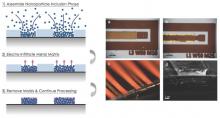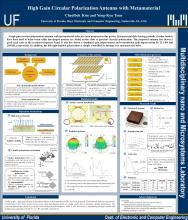Miniaturization of Resonant Wireless Power Transfer System Components
Portable and wearable electronics require wireless charging to sustain mobile usage at convenient positions and locations. The goal is to develop a compact, highly power efficient wireless power transfer charging system operating at 6.78 MHz, which is compliant with the Rezence standard.The research scope includes development of a highly compact, high efficiency, ferrite-core receiver antenna; and a metamaterial lens to enhance WPT efficiency between the transmitter and the receiver. In this work, we focus on WPT receiver modules for various portable and wearable consumable electronics with a power rating of ~10 W such as smart phones, radios, laptops, tablets, and military electronics. In future work, this technology could also be scalable to other power ranges, such as mW for biomedical implants to kW for automobiles.



